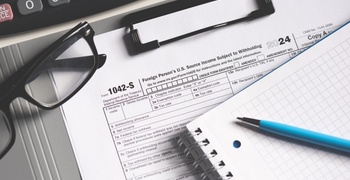Can your ecommerce platform handle interstate and cross-border taxes?
Ecommerce was thriving this time last year. It’s even bigger now.
Online sales in the United States reached $60.4 billion during September 2020, a 43% increase over September’s sales in 2019. October brought[GC1] more stunning growth thanks to the annual Amazon Prime Day event, which was pushed from July to October this year because of COVID-19. Prime Day sales outpaced sales during the previous 30 days by an astonishing 340%, surpassing projections to reach $10.4 billion. Even retailers offering no Prime Day deals saw sales increase by approximately 110%[GC2] .
With cases of COVID-19 spiking throughout the U.S., Europe, and other parts of the world, many consumers are turning to online sellers to get what they want and need. In a recent survey of 2,000 U.S. consumers by ecommerce software provider CommerceHub, 67% of respondents said it was more convenient to buy online than in store, and 89% planned to continue spending the same or more online through November.
Omnichannel shopping should continue to grow, too. Many consumers now prefer buying online and picking up in store (BOPIS), as it allows them to abide by public safety recommendations while avoiding the delays of delivery. It’s hard to beat safe and immediate gratification.
Consumers willing to wait to get just what they want are turning to international ecommerce sellers with increasing frequency. They’re taking advantage of the online marketplaces, like Etsy, that help connect retailers and buyers the world over.
While the expanding online market is exciting, this astonishing spike in online sales does create challenges for ecommerce businesses. Most states now require most online sellers to collect and remit sales tax — even sellers based in other states. Global sellers face unique compliance challenges as well. In addition to getting goods and services tax, sales tax, and value-added tax right, cross-border sellers need to ensure customs duties and import taxes are properly accounted for.
The post-Wayfair world
U.S. states won the right to impose a sales tax collection obligation on out-of-state sellers in June 2018, with the Supreme Court of the United States decision in South Dakota v. Wayfair, Inc.
Before the Wayfair decision, states could only require a business to collect and remit sales tax if the business had a physical presence in the state, such as an office, retail store, or employees. Physical presence in a state still triggers a sales tax collection obligation in all states with a sales tax, but in the post-Wayfair world, states can also base a sales tax collection obligation solely on economic activity, such as sales or transaction volume. This is economic nexus.
Since the Wayfair decision, 43 states, the District of Columbia, and numerous local governments in Alaska have adopted economic nexus laws. While good for state purses, these tax laws are a bear for businesses.
The many faces of economic nexus
Perhaps the most complicating aspect of economic nexus laws, at least initially, is that they provide an exception for small sellers. This has proven to be a double-edged sword: While businesses with very few sales likely don’t need to register with the tax department then collect and remit sales tax, growing businesses must constantly monitor sales into all economic nexus states with an eye toward that threshold.
Unfortunately, economic nexus thresholds vary from state to state.
Many states, inspired by South Dakota (of South Dakota v. Wayfair, Inc. fame), adopted South Dakota’s threshold of $100,000 in sales or 200 transactions. Yet these apparent similarities are deceptive. When calculating the threshold, some states require businesses to count exempt sales, some states include sales of services, and some states tally sales of intangible goods. Simply put, even thresholds that resemble one another on the surface can be quite different.
Furthermore, numerous states have strayed from the $100,000 sales/200 transactions threshold: Alabama has a threshold of $250,000; California and Texas have thresholds of $500,000; and New York’s threshold is $500,000 and 100 transactions. Again, the exact makeup of a threshold differs by state.
Several states require out-of-state sellers to register as soon as the threshold has been reached, as in, by the next sales transaction. Thus, it’s essential for businesses to understand the components of each state’s threshold and how close they are to meeting it. Avalara’s sales tax risk assessment can help.
The cross-border challenge
Ecommerce sellers with a global customer base face additional challenges due to cross-border taxes.
Selling into other countries requires product classification and documentation domestic sales don’t need. For an internationally shipped package to arrive without delay at a customer’s door, all applicable customs duties, import taxes, and shipping costs must be paid. Therefore cross-border transactions generally need to have a Harmonized Tariff Schedule Code (HTS code, or HS code).
Every product that can be shipped across an international border has a corresponding HS code so customs officials can track the flow of goods and ensure the correct international tax has been paid. Manually assigning the proper code to each product in a shipment is difficult because there are millions of codes. For example, a woman’s short-sleeve button-down cotton blouse has a different code than a woman’s long-sleeve button-down cotton blouse. Each HS code is associated with a tariff rate, so it’s important to get the tariff codes right.
Low-value goods (those with a sales price below the entry country’s de minimis threshold) are exempt from customs duty, therefore don’t need an HS code, but they’re still subject to oversight by customs officials. And the recent flood of low-value global ecommerce shipments has caused backups at customs, especially during the COVID-19 pandemic. That means it takes longer for customers to receive their orders.
Businesses shipping low-value goods into the U.S. can sidestep delays by applying for Entry Type 86 clearance. But everything comes at a cost: To obtain this expedited clearance, sellers or their shipping partners must assign the proper HTS code to all shipments. Most other countries have a similar expedited process. Avalara Item Classification helps importers swiftly assign the proper HS code to each shipment.
These are challenging times for all businesses, but they also offer opportunities for ecommerce growth — provided tax rules don’t bog you down. Learn how the right technology can help streamline tax compliance for interstate and cross-border sellers in Tax compliance for ecommerce sellers.

The Avalara Tax Changes midyear update is here
Trusted by professionals, this valuable resource simplifies complex topics with clarity and insight.
Stay up to date
Sign up for our free newsletter and stay up to date with the latest tax news.














